
A postcard or post card is a piece of thick paper or thin cardboard, typically rectangular, intended for writing and mailing without an envelope. Non-rectangular shapes may also be used but are rare.

Farringdon is an interchange station located in Clerkenwell, London, England, in the London Borough of Islington, just outside the boundary of the City of London for London Underground, Elizabeth line and National Rail services.
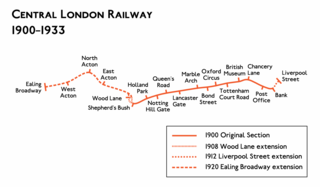
The Central London Railway (CLR), also known as the Twopenny Tube, was a deep-level, underground "tube" railway that opened in London in 1900. The CLR's tunnels and stations form the central section of the London Underground's Central line.
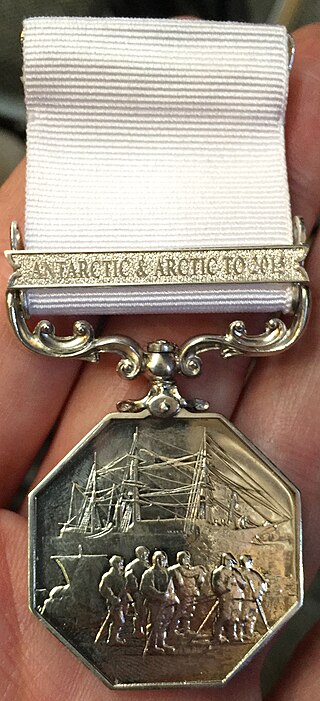
The Polar Medal is a medal awarded by the Sovereign of the United Kingdom to individuals who have outstanding achievements in the field of polar research, and particularly for those who have worked over extended periods in harsh climates. It was instituted in 1857 as the Arctic Medal, and renamed the Polar Medal in 1904.

The Charing Cross, Euston and Hampstead Railway (CCE&HR), also known as the Hampstead Tube, was a railway company established in 1891 that constructed a deep-level underground "tube" railway in London. Construction of the CCE&HR was delayed for more than a decade while funding was sought. In 1900 it became a subsidiary of the Underground Electric Railways Company of London (UERL), controlled by American financier Charles Yerkes. The UERL quickly raised the funds, mainly from foreign investors. Various routes were planned, but a number of these were rejected by Parliament. Plans for tunnels under Hampstead Heath were authorised, despite opposition by many local residents who believed they would damage the ecology of the Heath.

Personal Aide-de-Camp to the King is an appointment in the Royal Household of the United Kingdom. It is distinct from that of other aides-de-camp, in that it is only bestowed on members of the British royal family holding military rank. The appointment may be signified by the post-nominal letters 'ADC(P)'. It is an honorary role with few duties or responsibilities attached; in the 20th century the Personal Aides-de-Camp were specifically listed as riding close behind the Gold State Coach at each Coronation, and walking or riding close behind the Gun Carriage at each State Funeral, of a monarch.

Horace Brooks Marshall, 1st Baron Marshall of Chipstead, was an English publisher and newspaper distributor and Lord Mayor of London, 1918–1919.

The Great Northern, Piccadilly and Brompton Railway (GNP&BR), also known as the Piccadilly tube, was a railway company established in 1902 that constructed a deep-level underground "tube" railway in London, England. The GNP&BR was formed through a merger of two older companies, the Brompton and Piccadilly Circus Railway (B&PCR) and the Great Northern and Strand Railway (GN&SR). It also incorporated part of a tube route planned by a third company, the District Railway (DR). The combined company was a subsidiary of the Underground Electric Railways Company of London (UERL).
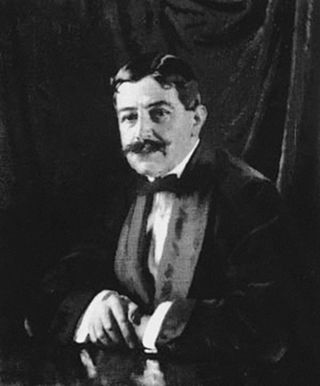
Sir Edgar Speyer, 1st Baronet was an American-born financier and philanthropist. He became a British subject in 1892 and was chairman of Speyer Brothers, the British branch of the Speyer family's international finance house, and a partner in the German and American branches. He was chairman of the Underground Electric Railways Company of London from 1906 to 1915, a period during which the company opened three underground railway lines, electrified a fourth and took over two more.
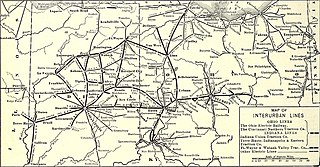
The Ohio Electric Railway was an interurban railroad formed in 1907 with the consolidation of 14 smaller interurban railways. It was Ohio's largest interurban, connecting Toledo, Lima, Dayton, Columbus, and Cincinnati. At its peak it operated 617 miles (993 km) of track. Never financially healthy, the company went bankrupt in 1921 and was dissolved into its constituent companies.
Colonel Sir Herbert Stuart Sankey was a British barrister and politician. The son of Lieutenant-Colonel H. T. Sankey, he was educated at Marlborough School and Christ Church, Oxford before being called to the bar at the Inner Temple in 1878. He married Josephine Annesley in 1884, and they had two daughters.
Jenia (Jean) Graman, nee Almuth Gittermann was a dancer and translator, best known for her translation of Kurban Said's novel Ali and Nino which she translated from the original German into English. When her translation came out in 1970, it became the basis for translations of the novel into many other languages around the world.
Brigadier-General Henry Clifford Rodes Green, was a senior British Army officer during the First World War.
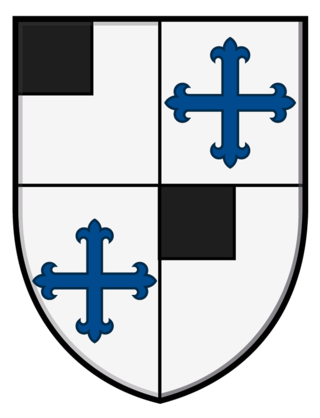
Major–General Hugh Clement Sutton was a General in the British Army, Deputy Assistant Director of Railways in South Africa between 1900 and 1902 and Lieutenant-Governor and Secretary of Royal Chelsea Hospital between 1923 and 1928.

Bloomsbury Street is a street in the Bloomsbury district of the London Borough of Camden that runs from Gower Street in the north to the junction of New Oxford Street and Shaftesbury Avenue in the south.

John Beagles was an English printer and publisher, especially of real photo postcards, through his company, J. Beagles & Co.
The Antrim Artillery was a part-time reserve unit of Britain's Royal Artillery based in County Antrim, Northern Ireland, from 1853 to 1919. It numbered 1st on the order of precedence of the Militia Artillery. Volunteers from the unit served in the Second Boer War. During World War I it defended Belfast Lough and trained gunners for service overseas. Subsequent units continued the Antrim Artillery traditions.

The history of postcards is part of the cultural history of the United States. Especially after 1900, "the postcard was wildly successful both as correspondence and collectible" and thus postcards are valuable sources for cultural historians as both a form of epistolary literature and for the bank of cultural imagery included in the postcard illustrations reflecting historic popular culture norms and tropes. Postcards are also valuable resources for scholars of architectural and regional history.














